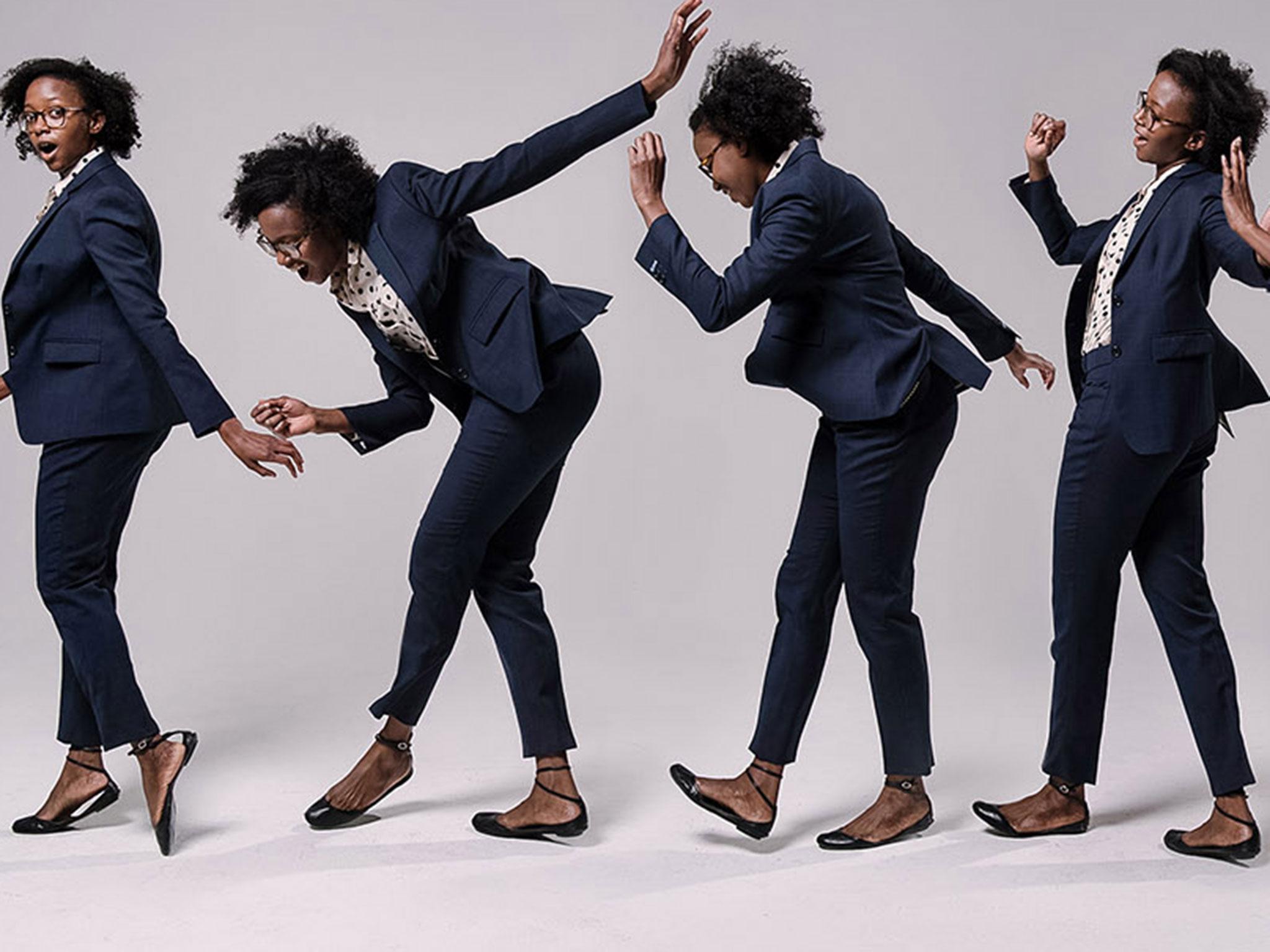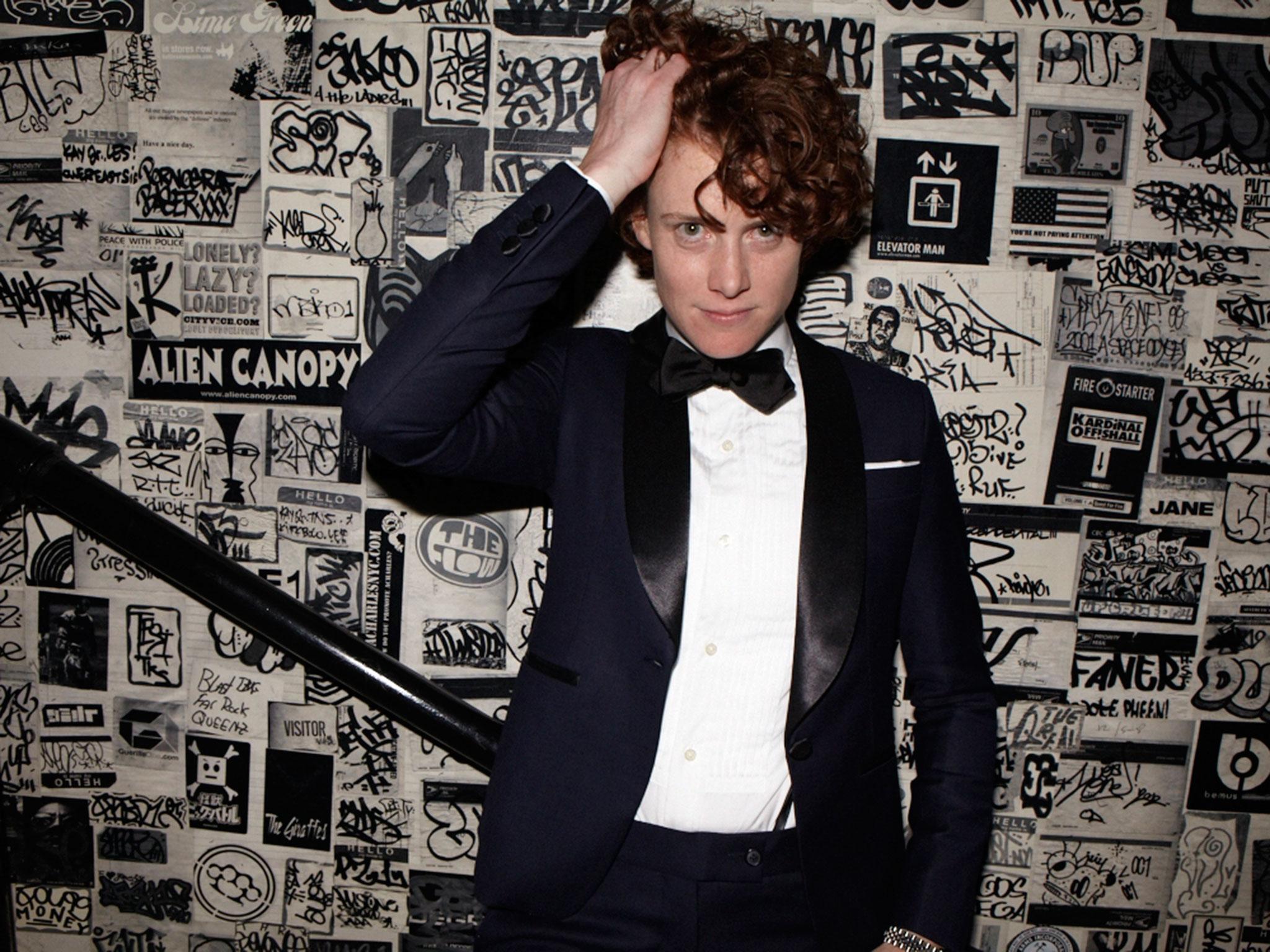Tailor who makes suits for trans people on why we don't just need men's and women's sections
Bindle and Keep tailor Daniel Friedman speaks about how a suit can be a source of anxiety for trans people

A perfectly tailored suit is a powerful thing. What is essentially a few pieces of fabric sewn together can make a person stand taller and exude confidence and an air of masculinity. At the same time, enduring a badly fitting suit with boxy shoulders and trailing trousers when those around you are dressed to the nines is a uniquely uncomfortable experience.
And for people who identify as trans or gender non-binary, clothing in general - let alone the hallowed suit - can be a source of great anxiety, according Daniel Friedman a New York City suit maker. Since opening Bindle and Keep in 2011, Friedman and his business partner Rae Tutera - who is gender nonconforming - have used to power of the suit to dress members of the LGBTQ community, as well as exonerated prisoners, and actors including Paul Giamatti in the drama Billions and Gaby Hoffman in Transparent. In 2016, Bindle and Keep was the focus of HBO documentary Suited produced by Girls writer Lena Dunham.
I understand you sort of fell into designing suits for trans and gender non-binary people after you teamed up with Rae Tutera?
When I started the company we were focused on menswear and men's suiting and we went after the Wall Street corporate crowd, who are generally cis gender [when a person is aligned with the gender assigned them at birth]. A year into running the company I hired Rae as an apprentice. Rae is trans masculine and non-binary. When Rae came on board we had a beer and hit it off. She runs a blog called the Handsome Feminist and mentioned ‘I’m working with Bindle and Keep’ and this informed those who are cis female or trans masculine who previously had nowhere to go for suits. They didn’t fit into the classic binary retail environment. People thought if they’re open-minded enough to hire Rae then they’ll put a suit on me, even though I have a bust and hips and the classic female anatomy. People want to wear suits and feel great about themselves.
So, we just said yes to everybody. It wasn’t a mission. When Rae came he never said ‘I have an idea for making non-binary suits for my community.’ And it opened up the floodgates after the New Yorker wrote about us on Thanksgiving morning in 2013. I don’t think I realised how big the whole thing was until I woke up to 300 emails from all over the world. One came from a parent in Paris who said 'I think my 12 year old child will transition and I want to thank you for existing. I know my child will be OK because of companies like yours.'
Is the process of designing a suit for a trans man or gender non-binary person different at all?
It’s funny because it’s not at all different but super different at the same time. If you look at the origins of a suit, it comes from a military uniform. If you flip the lapels up it looks like formal wear worn by most armed forces, like the US Marines. The idea is that it’s very angular and sort of makes a person present and feel like they have armour on. And a lot of our clients are triggered by certain parts of their bodies. When the average straight cis gendered person looks in the mirror and tries on a suit, they check if it fits. When our clients look they ask ‘is this masculine or feminine?’ And this adds a new layer.
We work with clients who have a bust and the classic female curvature. When they go to women's section and buy a female jacket, instead of making them feel protected like armour with a straight silhouette and angular lines they find curvy feminine clothing. Instead of making them protected it makes them feel vulnerable. In a sense it’s just a suit and it’s about getting the right measurements. On a more important level it’s about making sure our clients feel heard. We map their bodies out and make a suit to make them feel strong.
It’s very personal. When we meet people we talk for a good 20 minutes about how they feel about their bodies before we even get into the suiting process.
For example, let’s take Superman. He has a big chest and a tiny waist. He is the paradigm of masculinity. But if you put that shape on many of our clients they would say 'this feels very feminine'. So what we do is reverse that and bind the chest to reduce it. We give more room in lower rib cage so the suit has less of an hourglass shape. And when you buy a jacket from the women’s section you notice that the hips are bigger than the hip bone to emphasis curvature. But we make our hips three inches smaller than hip bone to ensure the jacket stays very close to the body. We try to reduce everything that might be very curved and straighten it out. But that doesn't mean making a loose suit that doesn't fit.

Have you had a lot more interest since being Suited was broadcast on HBO?
Most recently we’ve seen a large influx of straight cis people wanting the same service which is interesting. I think what we’re learning is that the way someone presents and their essence will come through no matter what they wear. If we have a very masculine client and they put on feminine suit they still look masculine presenting to the world. If someone is non-binary and they put on men’s clothing and they are smaller or it don't fit, instead of gender neutralising them it hyper-genders them and makes them feel like they don't belong.
Who are some of the most memorable clients that you have worked with since you opened, and why?
There are so many. We have clients who have put off getting married for years because they don't want to look stupid or they have just given up. Clothing is the bane of their existence. A big thing for people is they will feel that ‘OK the suit is going to fix me and it's the elixir to my gender challenges’. And the truth is it doesn't. It’s just a suit and people put a lot of weight on it. It’s just a milestone on a journey, and a lot of people find that very overwhelming. You’re still human and the 35 years of socialising up to that point is still there. We want to have a store wher people can be open about getting top surgery [where the breasts are removed] or stapling their stomach or getting testosterone treatment.
The funny thing is that by being open to LGBTQ it has actually opened us up to all kinds of other markets. We also worked with Innocence Project, which is an initiative in the US to exonerate incarcerated people who were wrongfully convicted. We have a lot of poor people in the US and overzealous prison system. Now they are getting clothing that fit perfectly and they become anything but a number. The whole suit is an essay to them and it helps them gain re-entry into society and the job force. And they have their own triggers and insecurities. We are taking lessons from LGBTQ people and applying it to others.
We also make suits for people in TV now and big hit shows. They come to us because we are so used to working with varied and diverse body shapes. We make the suits for Paul Giamatti in Billions and we make the suits for Gaby Hoffman from Transparent.
What are some of the biggest mistakes people make when buying a suit
The suit has to fit. The colour doesn't matter, the pattern doesn't matter. You can have the nicest fabric and pattern but if it doesn't fit you won't wear it. What we do is focus on the shoulders. A big thing with gender neutral clothing is that people will buy from the men’s section but anatomically they have the bone structure of females. Compared to males with same body mass they will be two inches narrower. Many of them have a bust and so they have to figure out how to get the jacket to close. If they go to the men's section and get the right chest size the shoulders are always too big, so to close it’s the case of getting a size up and up. Then the shoulders get bigger.
So, focus on the shoulders, the length of jacket and the sleeves. If smaller people come to us and can't afford a suit or don’t have time, we tell them to go to children’s suit stores. I wear J Crew boys shirts all the time and I own a custom suit company. Our philosophy is not just towards clothing but of openness. This carries through other business. A lot of people say 'I don’t want to work with LGBTQ people because I’m not from the community.' The truth is that it’s not scary. I strongly believe you don’t have a PHD in gender studies to make people feel great! In the same way you don’t have to be a trans person to be a trans person’s doctor. To help someone we just have to treat humans like humans. All of us have unique requirements and some happen to be trans.
Do you think we should do away with ‘men’s’ and ‘women’s’ sections in clothing stores?
I don't think we should do away with it. I think that we should have more options but I think the vast majority of people like going into the men’s section and buying a men’s suit. I think that would be sad if we lost it. So many people can’t express their gender so we just need more options. I definitely don’t think we should do away with it but we should have more sections that are more sensitive to a wider community’s needs.
Join our commenting forum
Join thought-provoking conversations, follow other Independent readers and see their replies
Comments